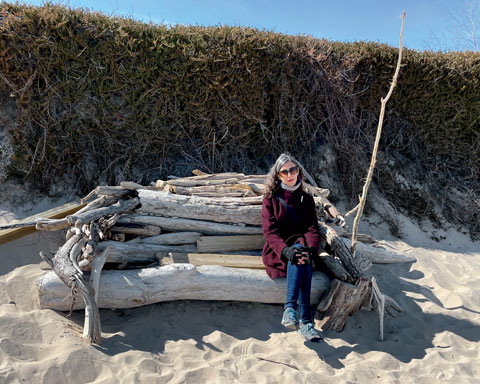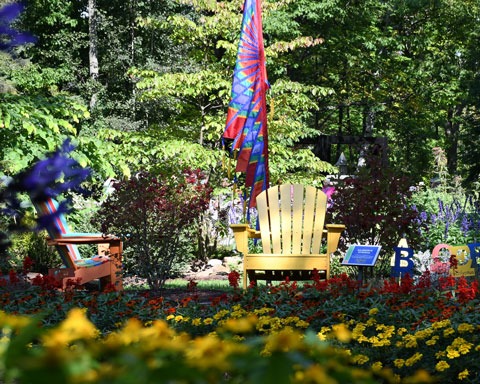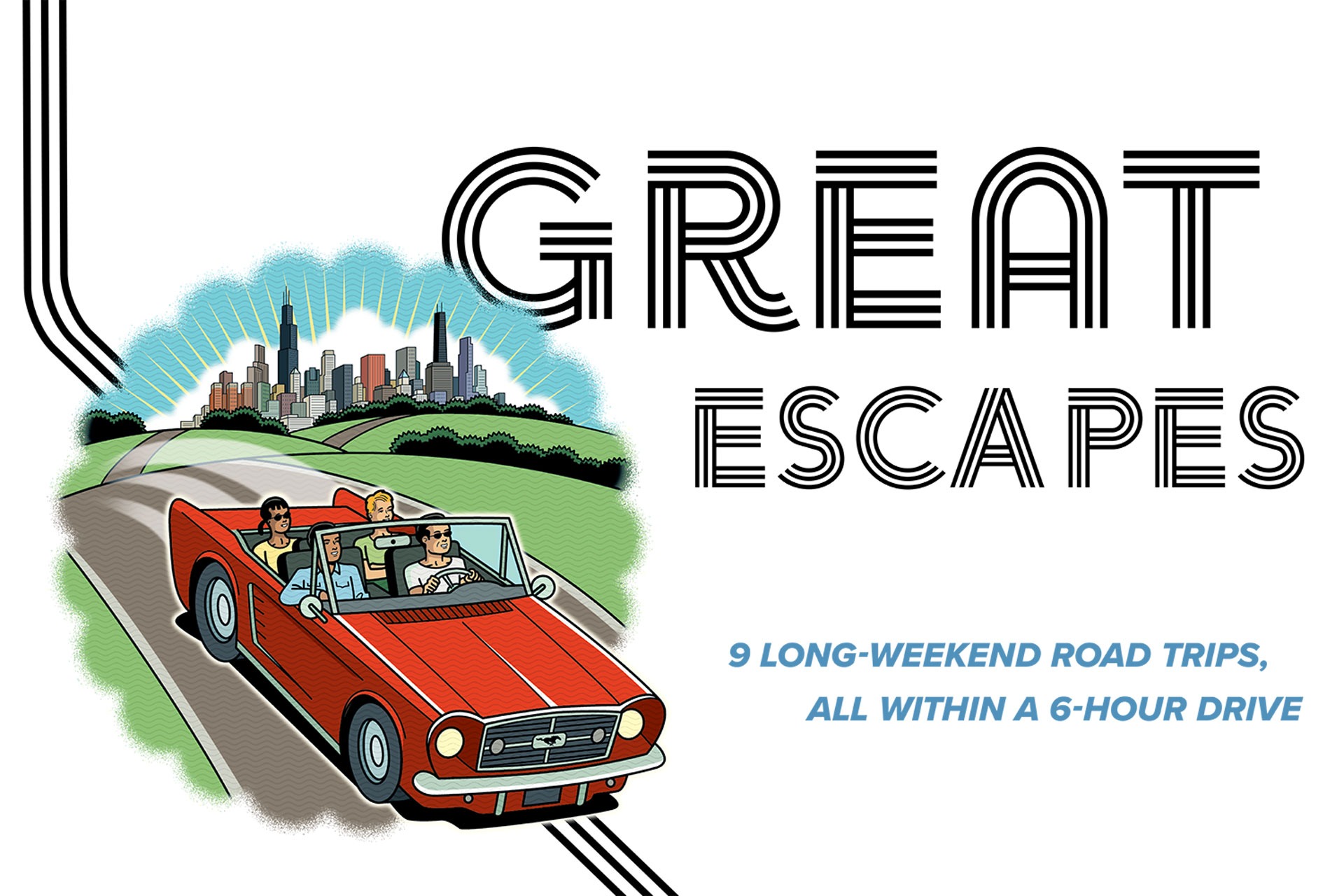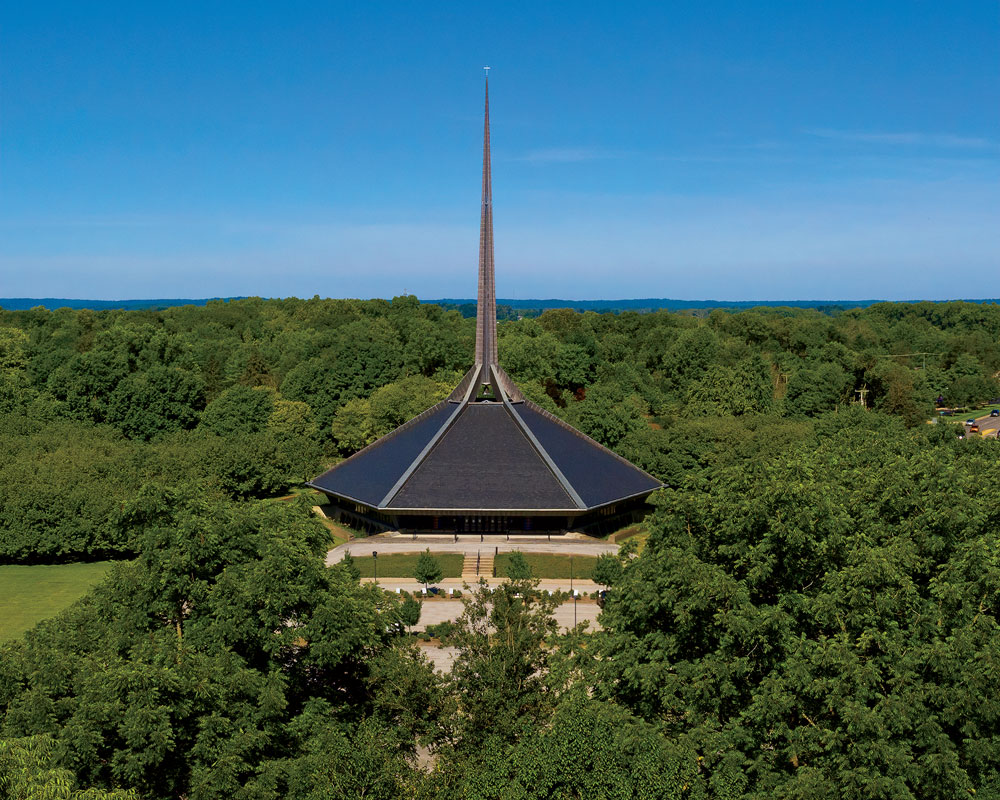

An architectural marvel, a Midwestern modernist mecca
My wife and I share a fetish: modernist architecture. The style, with its parallel horizontal lines stretching into eternity, has had a way of tracing the contours of our relationship, defining some of its most significant moments. Soon after we started dating, we joined Chicago Bauhaus and Beyond, a group of modernism enthusiasts (which, sadly, disbanded last year). A few years later, as a gentle evening snow blanketed the Loop, I proposed marriage in the most romantic setting I could imagine: Federal Plaza, beneath the crimson arches of Alexander Calder’s Flamingo, in the shadow of a trio of Ludwig Mies van der Rohe buildings.
And yet one Midwestern modernist mecca eluded us. That is, until last fall. Desperate to shake off quarantine cabin fever, we arrived in Columbus, Indiana, three and a half hours southeast of Chicago. The town of 48,000 stands, improbably, as one of the world’s great museums of modern architecture, with schools, churches, post offices, hospitals, and other buildings by some of the 20th century’s most renowned architects: Harry Weese, Kevin Roche, Robert A.M. Stern, Myron Goldsmith, and Deborah Berke, to name a few.
With walking and bus tours temporarily suspended during the pandemic (they’ve since returned), we embarked on a self-guided outing, beginning on Fifth Street, “the Avenue of the Architects.” The city’s first modernist building, the First Christian Church (1942), by Eliel Saarinen, was the place of worship of the late J. Irwin Miller, the wealthy Cummins engine company chairman, chief patron of the town’s architectural legacy. In the mid-1950s, Miller started a foundation that paid the architect’s fees for any public building designed by a notable architect. The program transformed Columbus from a prairie town into a draw for top executives and their families. Today, it is a place unlike any other, where bold modern masterworks mingle with the buildings of Main Street, USA.
Directly across from First Christian beckoned I.M. Pei’s red-brick, open-plan Cleo Rogers Memorial Library (1969), with Henry Moore’s sculpture Large Arch out front. Next door is Miller’s childhood home (1864; 1910 remodel), whose Victorian and Edwardian flourishes and Pompeii-inspired gardens are preserved as the Inn at Irwin Gardens, a bed and breakfast with rooms starting at $205 a night.
We were drawn to the Irwin Conference Center (formerly Irwin Union Bank; 1954), by Eero Saarinen. The glass-enclosed, open-plan building, capped by a roof with nine domes, represented a dramatic departure from the traditional idea of a bank as an imposing granite fortress. From there, we pointed the car to two more Eero Saarinen buildings: the North Christian Church (1964), a hexagonal sanctuary crowned with a 192-foot spire, and the Miller House (1957), the former residence of J. Irwin Miller, which features one of the earliest examples of a living room conversation pit.
Afterward, we meandered through the neighborhoods between Washington Street and the Flatrock River, observing how the modernism of the town’s landmarks had seeped into the designs of the more common, but still striking, residential developments. My wife and I daydreamed about someday owning one of Columbus’s glass-box houses. Here was a place, we told each other, that seemed made just for us. — Jake Malooley
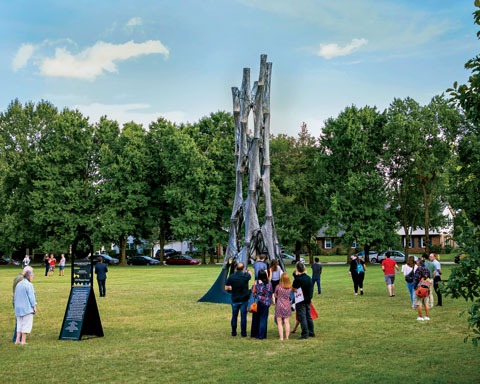
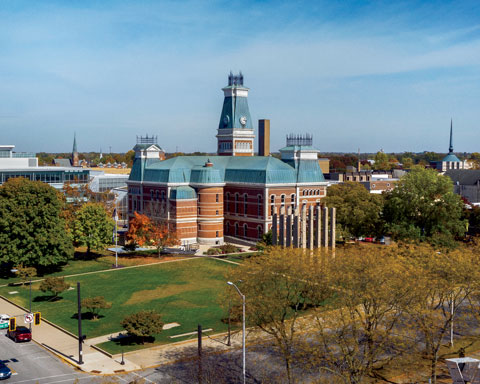
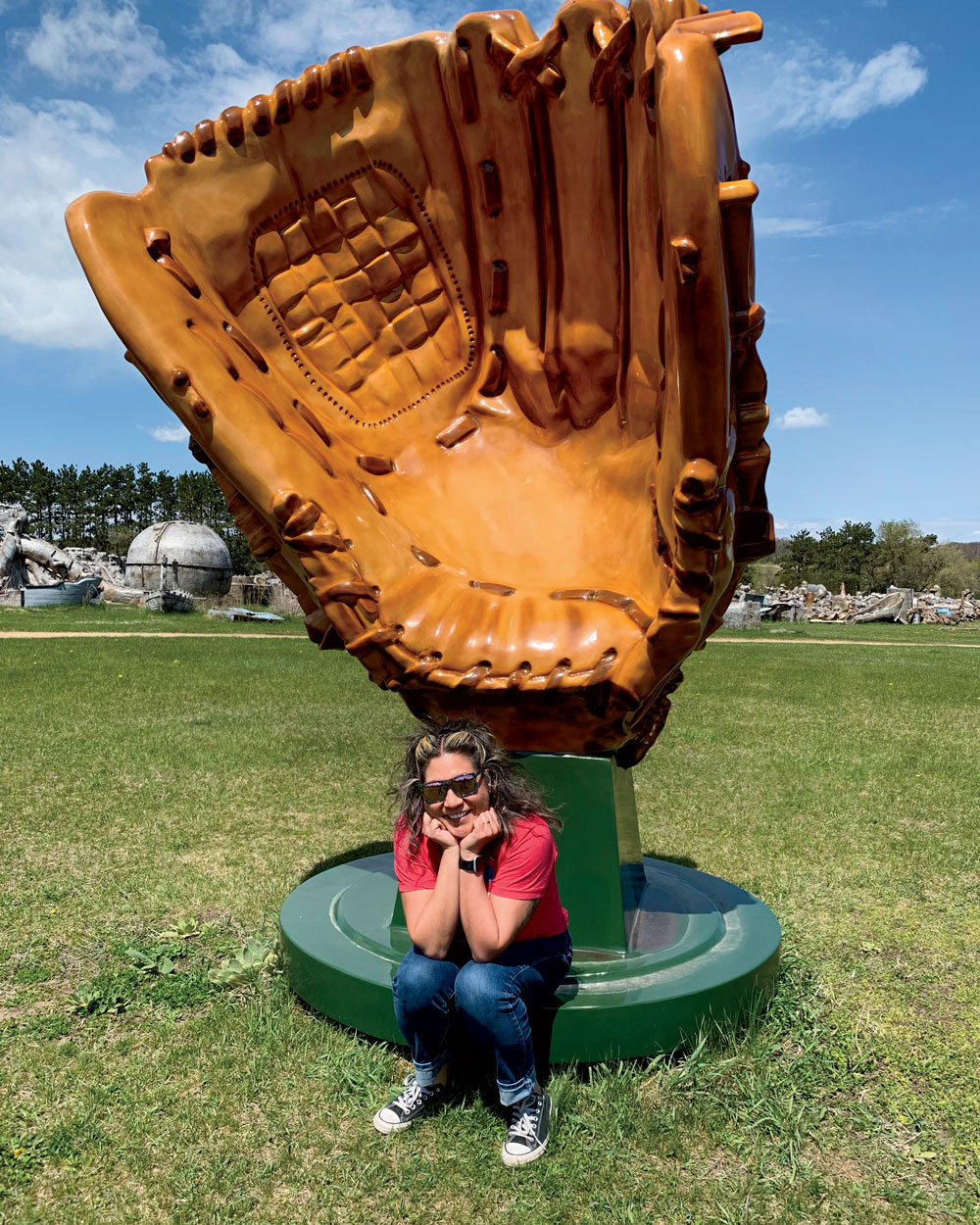

No Trojan horses, just giant kitsch
Nothing pleases me more than seeing giant things. I’m not sure where this love comes from, but it is what makes me take a 20-minute detour to Sparta, Wisconsin, on the way back to Chicago from Menomonie. I cannot miss the FAST Fiberglass Mold Graveyard. We pull into a sprawling horizon of green fields filled with gargantuan shark heads, cherubic Big Boys, and weather-beaten Santa Clauses. My heart sparks as I turn to my husband and say that when I die this is what I want heaven to look like.
Round out your trip The Deke Slayton Memorial Space and Bicycle Museum — a twofer. — Elizabeth Gomez
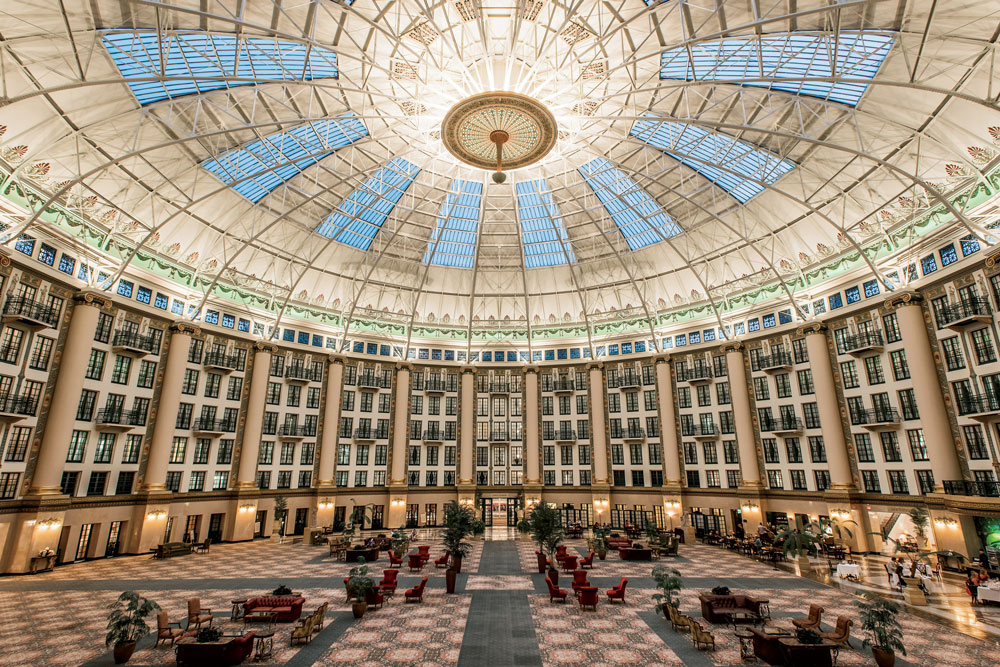

A pinnacle of elegance — and you don’t even have to leave the hotel
Get a load of the atrium. Once called the Eighth Wonder of the World, the six-story cylinder topped by a dome 200 feet across forms the heart of the 119-year-old West Baden Springs Hotel — one of two historic hotels at the French Lick Resort. A lush space populated by overstuffed divans as well as chessboards and decks of cards begging to be played, the atrium is a vast cockpit encircled by French doors and balconies hanging from well-appointed hotel rooms.
In the evening, guests filter in from their perambulations in the gardens, from golf or a visit to the spa, from bowling in the basement of the sister hotel, from shopping or rolling dice. In these hours, the atrium — manned by a pianist and crisscrossed by servers ferrying drinks from a nifty cocktail bar — never feels crowded or noisy. Even when the sunlight fades, what you hear is a murmuring report of elegance. — Tom Chiarella
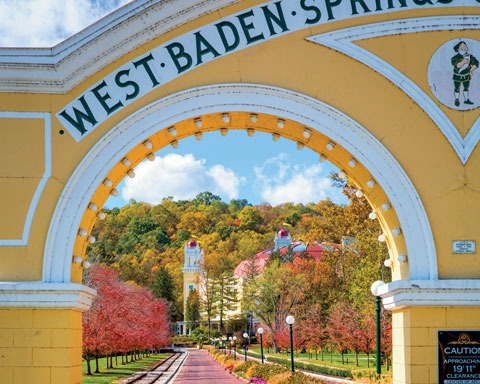
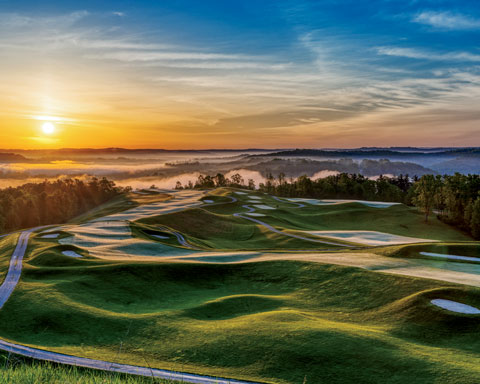
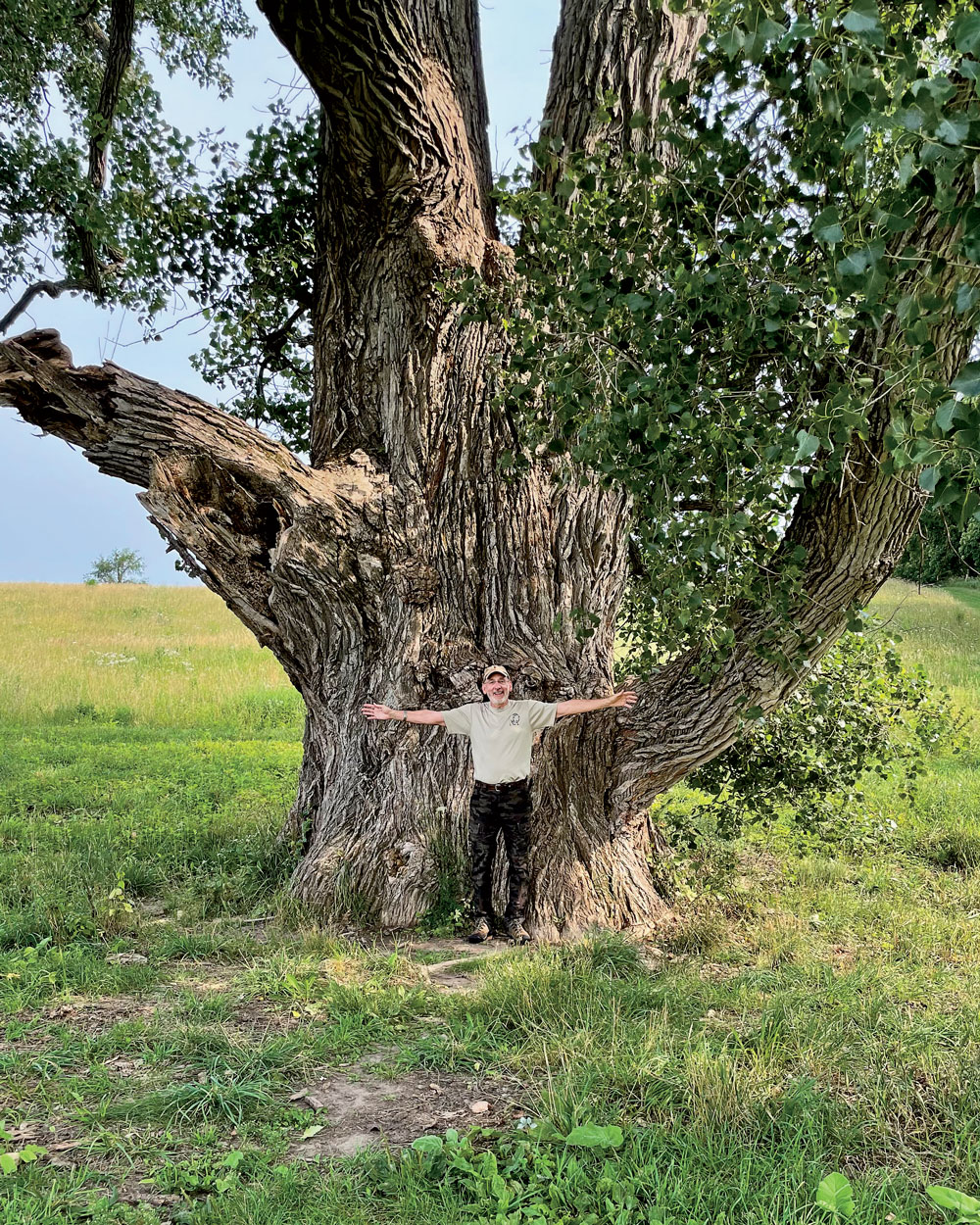

Only God can make a tree, and this one’s a doozy
Arboreal grandeur? Northwestern Illinois doesn’t leap to mind. But the redwoods and sequoias of the West Coast are too far away for a weekend, so we have to work with what we’ve got. And what we’ve got — at the Bald Hill Prairie Preserve in Mount Morris — is still something to behold.
To see the tree ranked among the largest in the state, you’ll follow winding country roads along the Rock River to a secluded 380-acre conservation area, home to gorgeous wildflowers, a wooded expanse, birds and butterflies, and scarce native prairie plants (according to the Byron Forest Preserve District, only 0.03 percent of original prairie remains in Illinois). Up and down hills you go (hills!), until it comes into view: the lone eastern cottonwood, 122 feet tall and almost 29 feet around.
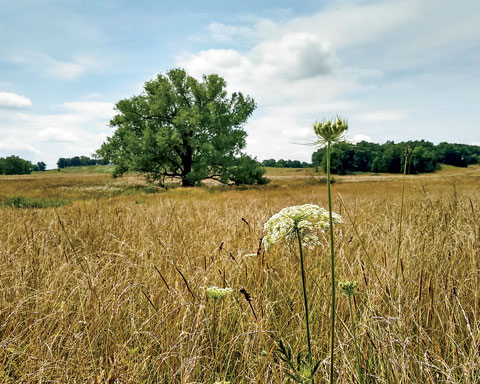
I don’t want to oversell you on the experience — it’s … a large tree. (In a Simpsons-esque touch, from certain vantages you can see the nearby nuclear power plant.) Still, there’s something sublime about it. My family and I keep returning to what we’ve come to call the “big-ass tree” to watch it change throughout the seasons. In late winter, its bare, crooked branches stand stark against moody skies. In high summer, the breeze rustles its innumerable leaves, making a sound not unlike the ocean. Under the massive green shade, it’s hard not to feel an appreciation for where you are and who you’re there with.
Round out your trip Ogle County’s hiking and biking trails; a night in Oregon in one of the nine rooms at the Patchwork Inn, a sustainability-minded B&B in a Greek Revival building dating to the 1840s (Abraham Lincoln was said to have lunched there); and burgers at the retro Jay’s Drive-In. — Deborah Shapiro
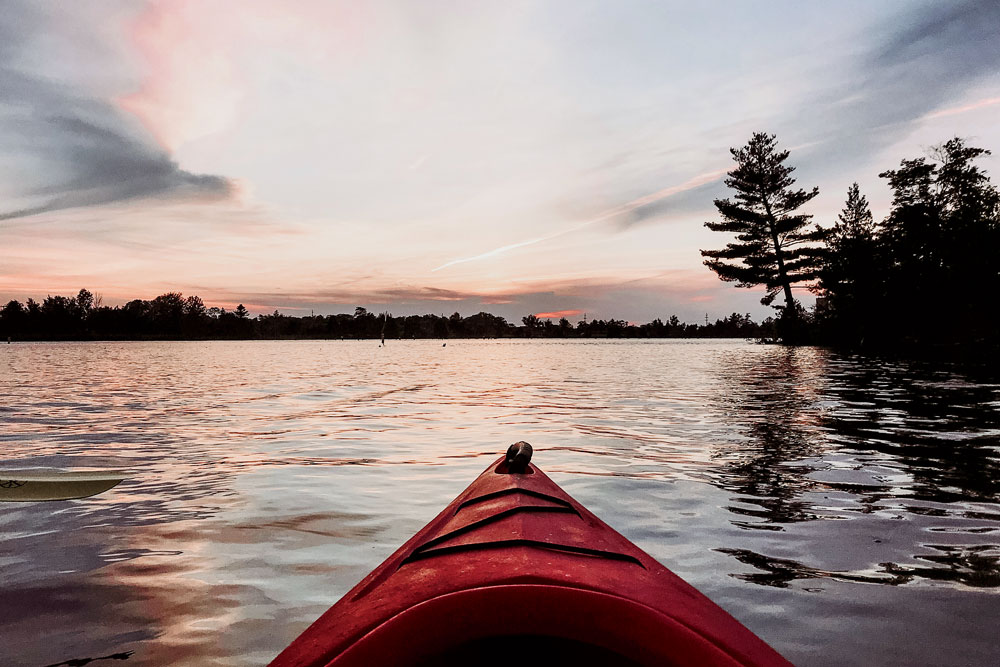

The Liam Hemsworth of Michigan tourism
One of my favorite spots to take the kids is Elk Rapids, just outside Traverse City in northern Michigan. If Traverse City is Chris Hemsworth, then Elk Rapids is Liam: One is beefed out and wildly popular, and the other is just better.
Spend the day at Elk Rapids Day Park, a wooded area with gigantic sculptures that opens to a sandy beach with clear, warm water. Water shoes are recommended because of the stones at the bottom of the lake. I saw families hunting for Petoskey stones there and then Googled the precious textured fossil and learned it’s the state rock of Michigan.
Round out your trip Bike, standup paddleboard, and kayak rentals from Right Tree Adventure Rentals, a nonprofit benefiting outdoor adventuring for girls; a trip to Guntzviller’s Taxidermy; U-pick farms along US 31; local brews from Townline Ciderworks; and dinner at Riverwalk Grill & Taproom. — E.G.
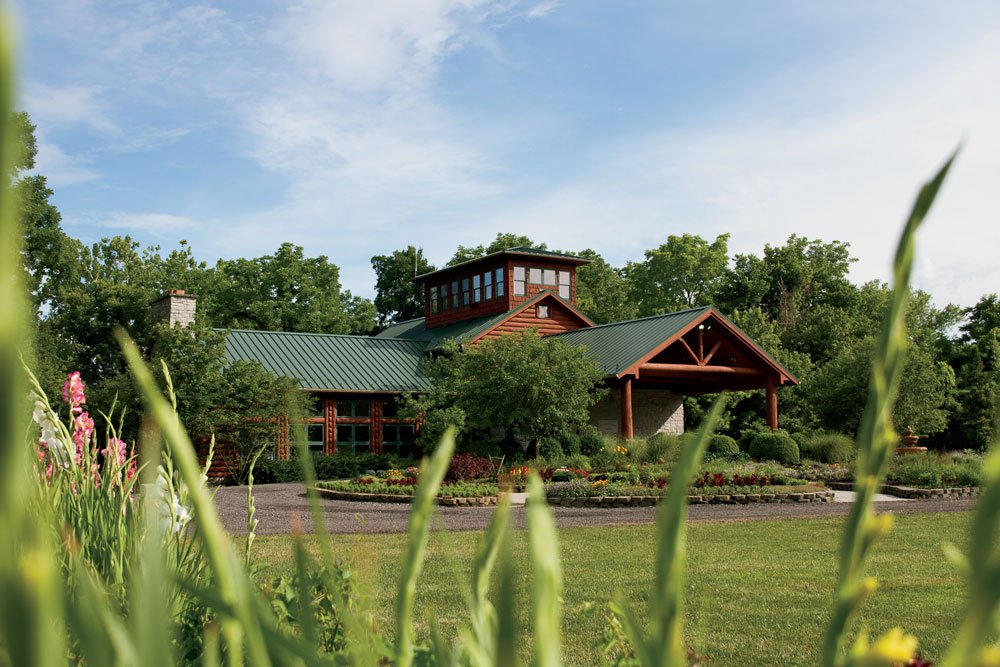

Fine dining, down on the farm
About a decade ago, I ate a spectacular, if surreal, meal prepared entirely by Michelin-starred chefs (including Ever’s Curtis Duffy) in ruraler-than-rural Milan, Ohio. The occasion was the opening of the Culinary Vegetable Institute, an event space and research facility with a kitchen to rival that of the French Laundry. The CVI was the latest innovation from the Chef’s Garden, a nearby family farm that came to have considerable sway in the world of fine dining as it got chefs hooked on its microgreens and baby vegetables. Head farmer Lee Jones showed up routinely at black-tie food galas in denim overalls and a red bow tie, a reminder to coastal elites that “American gastronomy” springs from the heartland.
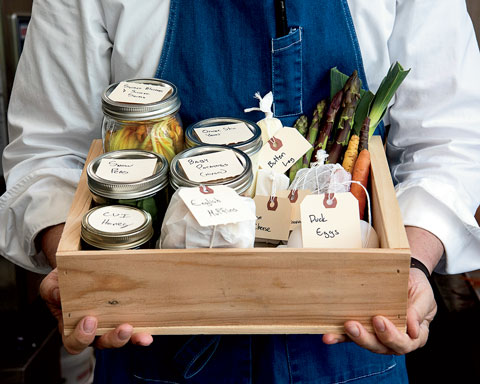
After the dinner, I stayed in the CVI’s guest suite. It came with a fully stocked kitchen, and the next morning I had the fixings for a grand farm breakfast — churned butter, honeycomb, and fresh eggs counted among the highlights — and a basket of produce to tuck into my suitcase. Over the past year, the Jones family has begun offering this experience on Airbnb. Coupled with a tour and shopping spree at the farm, it reminds you that getting back to the earth and pampering yourself needn’t be mutually exclusive. — John Kessler
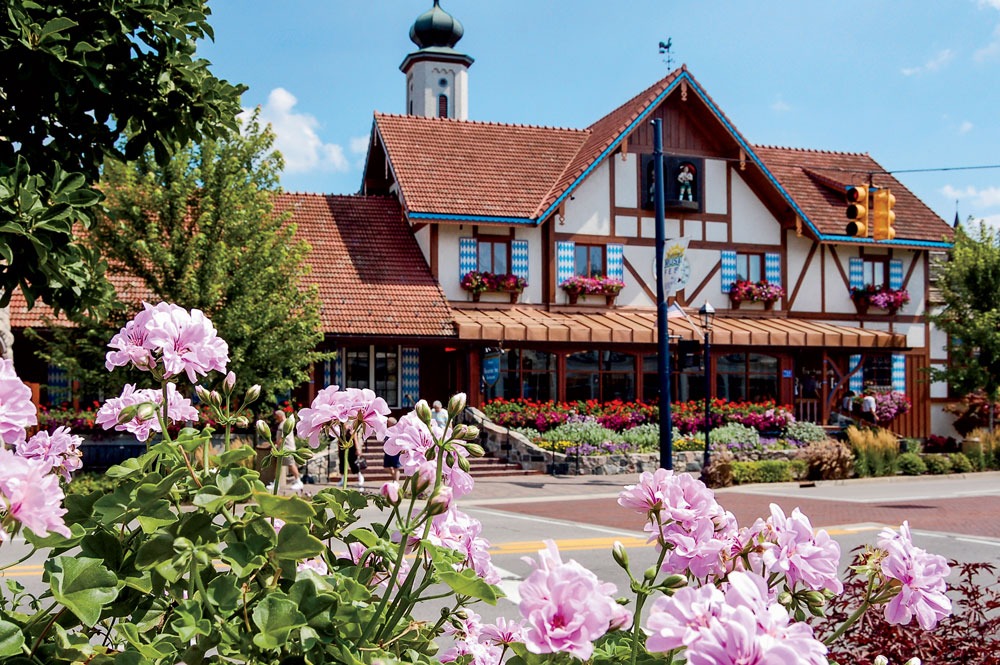

It’s always Christmas here
Call me a reformed Santa denier. I learned early on there was no such thing as Santa Claus, and at age 6, I thought my fellow first graders were naive. One day, a girl given to bursting out in song and dance started going on about what St. Nick was bringing her.
“But he’s not real,” I announced.
We went back and forth until our librarian gathered everyone in a circle and asked us to consider why we believed the things we did. She pulled out a variety of books about Santa, St. Nicholas, and Father Christmas, not telling us what to think, just how.
I could finally appreciate the Christmas spirit. And if I ever need to experience pure holiday joy midyear, I can find it in Frankenmuth, Michigan, near the thumb of the mitten-shaped state. Fueled by Mackinac Island fudge and other sweet treats, festive lights, Nativity scenes, and quirky tree ornaments, Frankenmuth is one of a handful of places in the world that celebrate Christmas all year.
Family, tradition, and sense of place anchor the picturesque town known as Little Bavaria, which was founded by German settlers. I know I’ve arrived because of the charming timber-framed buildings, the state’s largest covered bridge, a 35-bell glockenspiel, and walkable flower-lined streets that subtly invite me to tap out of the Sturm und Drang of workaday life.
Delicious high points of the Frankenmuth experience are the crispy fried chicken at the iconic Bavarian Inn, known for its German-style meals, and Zehnder’s of Frankenmuth, a 2020 James Beard winner. The menus surface memories of bygone family meals; the secret ingredient must be love.
Round out your trip The Frankenmuth Bavarian Inn Heritage Farm (a.k.a. Grandpa Tiny’s Farm), ziplining, hay or carriage rides, and farmers’ markets. — Deborah D. Douglas
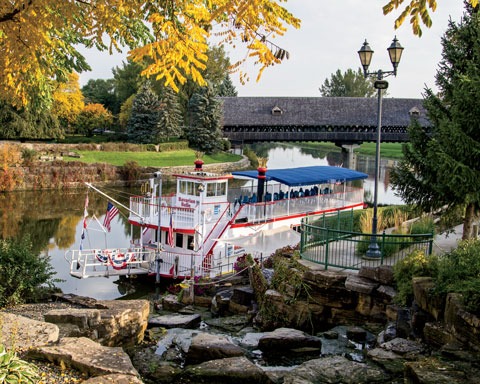
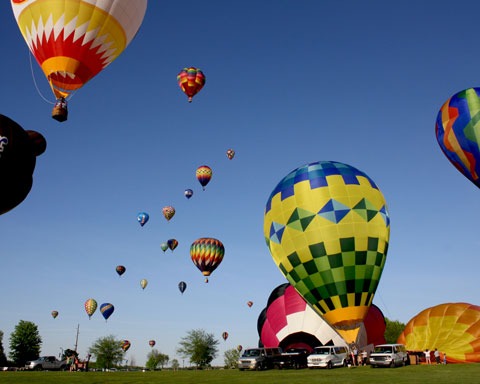
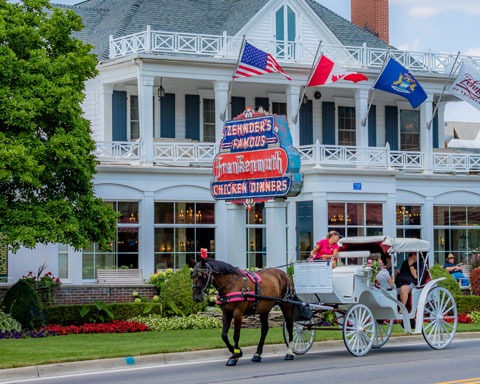
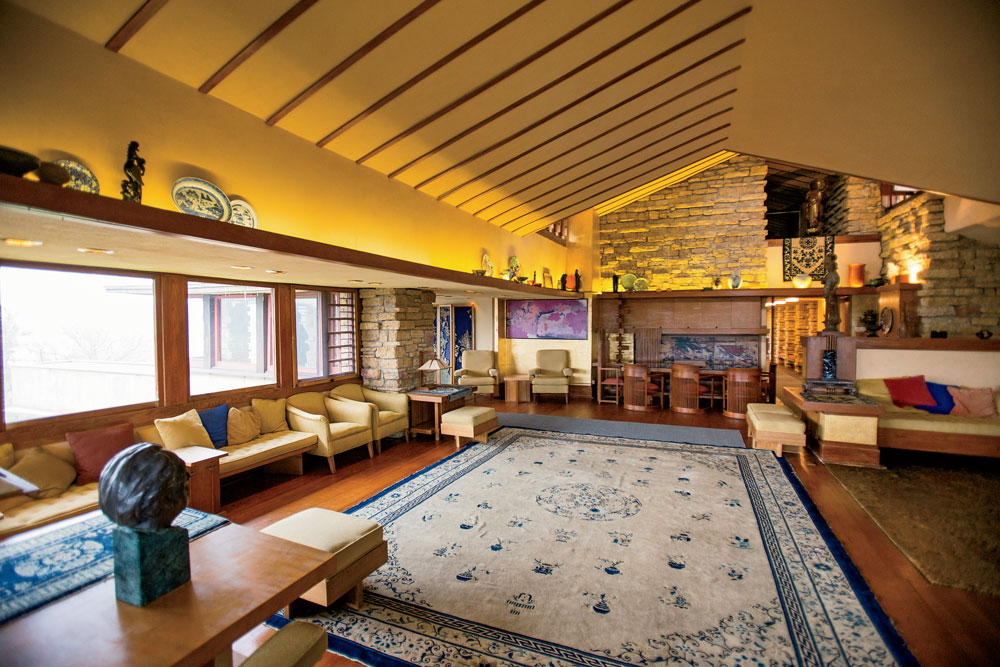

Come for Taliesin, stay for the hills
The attractions of the Spring Green area are well known: From Frank Lloyd Wright’s Taliesin — where the docents will not mention the arson and murder of Wright’s mistress and her children even if you raise your hand and ask, with a knowing look, “So, what started that fire in 1914?” — to the American Players Theatre. Not to mention the House on the Rock, the Taj Mahal of kitschy roadside attractions that author Neil Gaiman suggests is a nexus point between the worlds of gods and humans. It’s as good an explanation for its existence as any I’ve come up with.
The town itself has weathered the pandemic well and has slowly opened back up, with a new pizza restaurant in the old bank building on Jefferson Street and the return of the local music venue, the Shitty Barn (it is, in fact, a shitty barn — bring your own chairs).
But that’s not why I come here. I come here for the hills. That’s right: The ground itself undulates, rising up in large protuberances, some higher than a quarter mile! The only thing I miss of my coastal roots after 23 years in Chicago is topography, the pleasures of cresting a rise to see a river valley or a plain, or just another hill. Spring Green is on the eastern edge of a geographical region, untouched by ancient glaciers, called the Driftless, like something also out of a Gaiman novel. I don’t know if pedaling or running up and down those hills will eventually bring me to the realm of the gods, but I do enjoy trying. — Peter Sagal
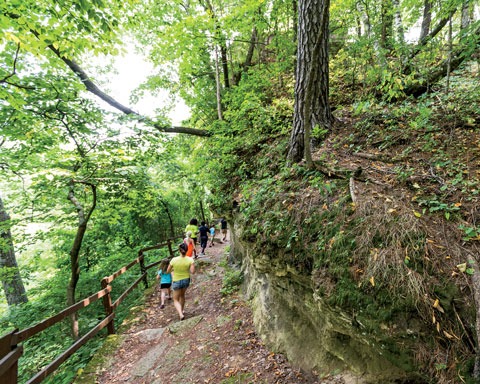
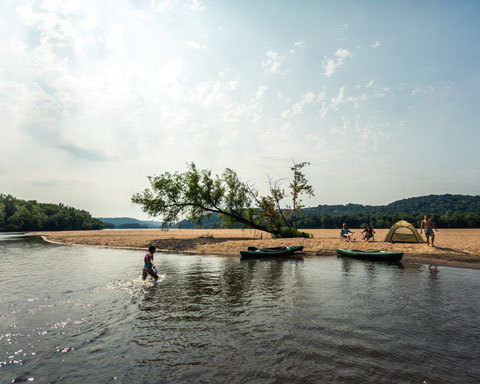
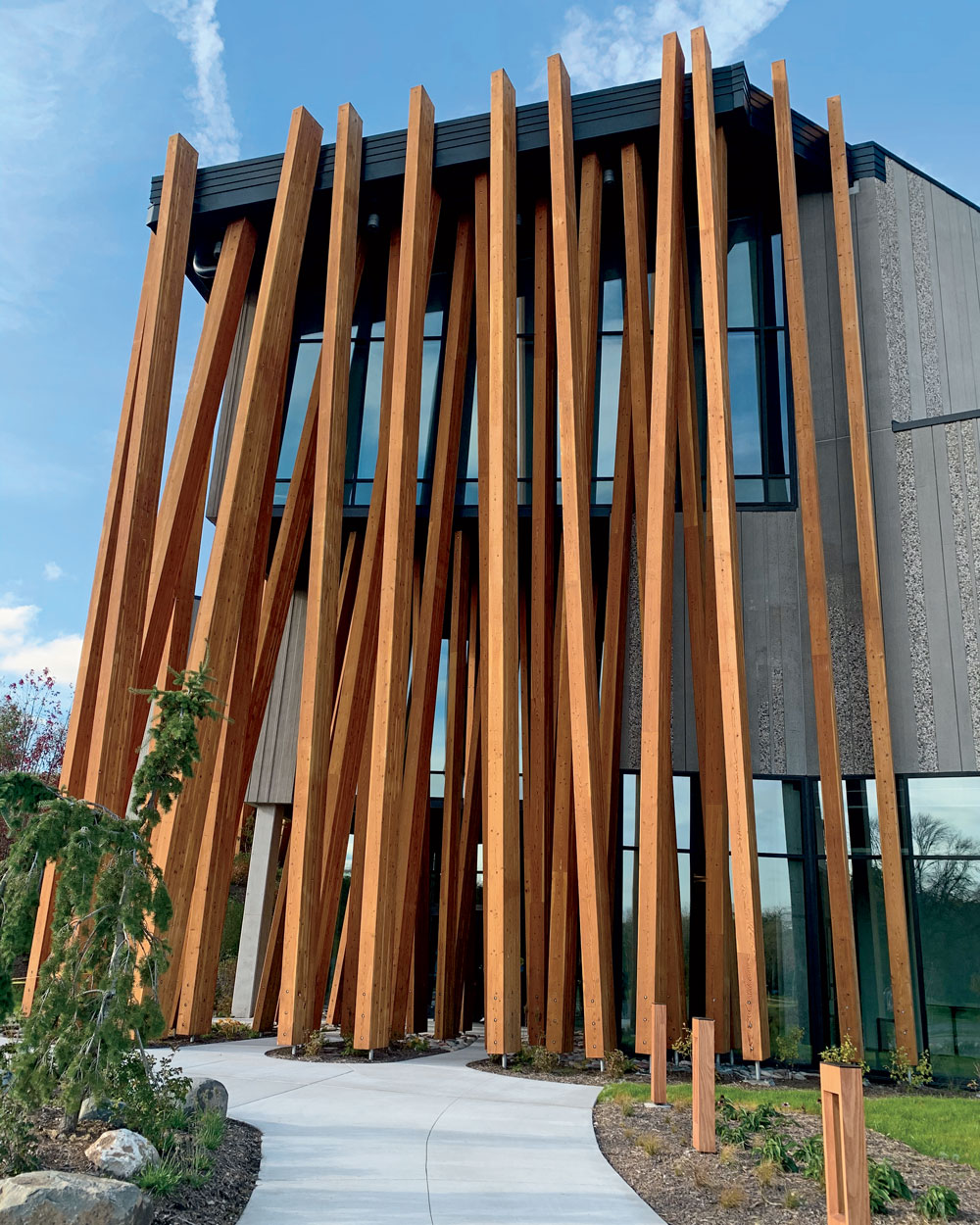

Step outside — for art, for nature
It’s always made sense to me that Wisconsin, with its secretive woods and shifting dunes, would be a wonderland of visionary and outsider art. The state’s scenic byways are studded with sculpture gardens and grottoes where self-taught artists have crafted stunning intuitive displays. So I was thrilled to learn earlier this spring that Sheboygan, just two and a half hours from Chicago, was about to celebrate the opening of the Art Preserve.
An extension of the John Michael Kohler Arts Center — where every iota of space is exquisitely curated, right down to the artist-painted stalls and urinals in the restrooms — the space showcases entire artist-built environments. With such holdings as the sculptures, painting, and decor of Mary Nohl’s cottage from the Milwaukee suburbs — known locally as “the witch’s house” for its arresting carved figures — the Art Preserve gives an immersive sense of the in situ appearance of work not adequately captured in other museums.
The Art Preserve alone was worth the 300 miles of round-trip driving, but happily, I discovered far more to see, including the Tellen Woodland Sculpture Garden, where, beginning in 1942 and continuing until his death in 1957, James A. Tellen installed more than 30 of his cast concrete statues across the grounds of his family’s summer cottage, a magical dreamscape.
The Kohler-Andrae State Park holds a wealth of biomes, from shimmering beaches to pine forests. After hiking, I had to try a Mudpie and chocolate-cinnamon brioche doughnut at Johnston’s Bakery, and I foraged picnic fixings from the store inside the restaurant Il Ritrovo and ate near the Harbor Centre Marina. There, the reconstructed schooner Lottie Cooper, wrecked during a gale in 1894, awaited, a free outdoor exhibit conveying how dangerous the timber and shipping industries were and remain.
On the way home, I stopped to walk along the Lake Michigan bluffs at Lion’s Den Gorge Nature Preserve outside Grafton and to stroll the boardwalks above the delightfully soggy Cedarburg Bog a little way inland. They didn’t turn me into a visionary artist, but these singular landscapes supplied visions for days. — Kathleen Rooney
